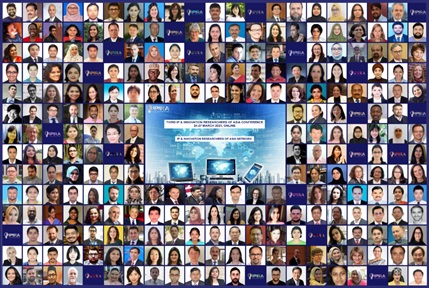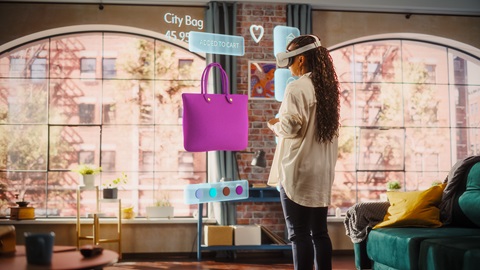Missed Call Marketing In India
Despite the sluggish demand for products and services in urban markets, rural markets are growing faster than ever in some of the largest emerging economies. While rising wages create a growing middle class in countries such as China, Mexico, and South Africa, rural residents also demonstrate optimism about future wage increase (Kapur et al, 2014). In China, demand in the countryside for consumer goods has already begun to outstrip demand in the cities and according to Nielsen (2015) reports, in India, consumption in rural areas is growing at 1.5 times the rate in urban areas (Kapur et al, 2014).
From 2009 to 2012, spending by India’s 800+ million rural residents reached $69 billion, some 25% more than their urban counterparts spent over the same period. This was reflected in the increased demand for discretionary goods and lifestyle products, including mobile phones, television sets and two-wheelers (Chakravarty, 2015). Over 2012-2017, this rural segment of the Indian economy was expected to grow at a pace of 8-10% per annum and is anticipated to add new consumption of US$ 90 billon-100 billion during that period.
The opportunity that exists in the rural Indian market provides immense scope for organisations to grow their business. Companies from FMCG, healthcare, banking, finance, auto and telecom have expanded their operations to rural areas where companies like Coca Cola, Pepsico, LG, Samsung and Unilever have penetrated the rural market with a vengeance. These Indian and Transnational conglomerates are targeting the Indian rural market by using innovative techniques to reach rural consumers and scale operations profitably. These companies have worked very closely with the rural diasporas and have spent a number of years understanding the rural consumers’ attitudes and behaviours. But they are meeting with mixed results. An undeveloped transportation infrastructure, unreliable telecommunications and electricity services, inadequate distribution networks, and widely dispersed consumers make it costly to establish a profitable presence at scale (Kapur et al, 2015).
A major challenge for companies is how to reach out to rural consumers in places where mass media is almost non-existent. Innovative companies have capitalised on the fact that despite the vast number of media dark areas, there are 200 million rural mobile subscribers in India, more than the total number of subscribers in Brazil and 14 million Direct to Home (DTH) connections in rural areas, out of a total of 20 million. India had 833.02 million active mobile phone users as of December 2014, according to regulatory data (Chakravarty, 2015).
According to Schumpeter (2013), around 90% of mobile phone connections in India were prepaid and, despite the relative inexpensiveness of calls, it was not uncommon for people to ask each other to, “Give me a missed call”. This is a proxy for a pre-decided short message such as “thinking of you” or “call me back”.
Missed calls have evolved into the modern equivalent of Morse code. The practice dates back over a decade, when exorbitant calling rates forced customers to find a smarter way to communicate. Today, even with some of the lowest call rates in the world, the practice of leaving missed calls persists and continues to be used by children to inform anxious parents (or spouses to inform anxious partners) that they have reached somewhere; to summon their drivers; to order food, receive cricket scores and bank balances and just about any other information or content conceivable. It is in this context that the start-up company Zipdial, a Bangalore based outfit, spotted an opportunity to monetise the Indian mobile subscriber’s tendency towards thrift. Capitalising on the popularity of ‘missed calls’ in India, Zipdial offered a new way for advertisers to reach their customers and the concept of “missed call marketing” was born.
Brands prominently displayed a phone number in their ads, urging people to dial it. The call, once made, disconnected automatically after one ring and the caller was sent a text or a voice message informing him of offers and discounts. According to Pathak (2013), the first time the service went viral was when it tapped into India’s biggest obsession: cricket. During the 2011 cricket world cup, Zipdial relayed cricket scores and updates through text messages in exchange for missed calls. On the day that India played Pakistan, Zipdial clocked 4 million calls. It then gathered data on their callers by requesting details of their gender, age, city etc. According to the CEO of Zipdial, they were not selling missed calls but instead eliciting consumer engagement through a simple interface. Clients were paying Zipdial, not for missed calls, but for the analysis of data collected from these campaigns. By distinguishing a repeat customer from a first time caller, companies using the data could help deliver appropriate marketing messages to both consumer segments.
Another innovative use of missed call marketing was demonstrated by Unilever’s Indian arm, Hindustan Unilever Ltd (HUL). HUL’s Kan Khajura Tesan (KKT), which loosely means earworm station, was an initiative devised to reach consumers in remote places where there are virtually no sources of entertainment. With this campaign, HUL wanted to increase brand awareness and push sales of its most popular detergent brand, Wheel.
To participate in this campaign, a consumer was required to leave a missed call (an incomplete call where a person hangs up after one or two rings on dialing a number) on the toll-free number. The idea of the KKT evolved from the insight that, despite living in media dark areas, the rural consumer had almost constant access to one device — a mobile phone.

HULs market research revealed that the rate of penetration of mobile phones was 80% in rural areas, while TV was around 40%. In these locations, there was thus a void for entertainment in comparison to the rest of the country. HUL decided to exploit this opportunity and fill the market gap through mobile phones. However, the frugality of the audiences, and particularly in the case of rural consumers, steered HUL to the key consumer insight of ‘leaving a missed call’ which subsequently became the cornerstone of the media strategy for this campaign. Since this audience recharged their pre-paid cards with the minimum talk-time balance, the mobile phone became the most effective medium by which to reach them (Pathak, 2015).
HUL’s media strategy agency, PHD, later evolved a marketing strategy whereby the brand’s missed call marketing campaign was linked to the wider brand strategy of helping consumers to save costs. The idea being that Wheel actually gave you more washes at a lower cost. Once the consumers left a missed call, the system would then recognise the telecom circle, identifying the geographical location and associated prominent dialect of the incoming call and an automated voicemail returned to the consumer’s phone with the content delivered in the appropriate language. The consumer could then listen to the content (e.g. in this case, an entertaining joke or saying) in his/her language. Specifically, every time consumers left a missed call, they would get an amusing call back message from their favourite movie star, courtesy of the Wheel brand. The call ended with a brand salutation and the audience was told to call again if they wanted to listen to more jokes (Live Mint, 2015).
By leveraging on frugal consumer behaviour, coupled with Bollywood stardom and humorous call back messages, Wheel was able to connect and engage with a very large number of consumers. Over the duration of the campaign, 30 pieces of unique content personalised in the dialects of the locations involved were created and distributed via mobile phones. The campaign resulted in the raised association between the brand and its targeted attributes, significant positive mind measure movement and increased product sales. Three million consumers engaged 28 million times and a 95% increase in the perceived association of Wheel with its desired attributes was achieved. Over 78% callers listened to over 80% of voice content in terms of duration. The average consumer engaged with the brand approximately 9 times and sales nearly doubled from 40% to almost 76% (Live Mint, 2015). The initiative enabled HUL to create a communication channel in rural India perfectly suited for the promotion of its other brands.
Over the past year, the company has used this route to effect stronger brand-benefit relationships for some of their other brands through a range of similar activities. For example, for their Lux brand, positioned as the soap of Bollywood stars, HUL invited entries from listeners to engage with leading movie stars. They received 24 million calls, of which 14 million were unique, received 10 million entries and delivered 21 million ad impressions for the Lux brand. In July 2015, HUL opened up this popular mobile radio channel to external advertisers i.e. brands from outside the HUL portfolio. For instance, food brands that were not deemed as competitors of any Unilever products could theoretically advertise on this platform (Irani, 2015).
India’s story continues to be fraught with contradictions – on the one hand there exists 80% penetration of mobile phones in rural areas, on the other hand, 300 million people continue to live in conditions of extreme poverty. The examples discussed in this case highlight how companies have applied remarkable innovation to push sales of products or capture market research data by taking advantage of this high penetration of mobile technology across rural communities.
References
- Chakravarty, A. (2015) ‘The evolving scope of rural India’, Advances in Economics and Business, Volume 3 Issue 7, pp 261-27.
- Irani, D. (2015) ‘Like A Boss: Rural India plugged in, now HUL's Kan Khajura looks at bringing other brands on board.
- Kapur, M. Dawar, S. and Ahuja, V.R.(2014) ‘Unlocking the wealth in rural markets’ Harvard Business Review, June 2014.
- Live Mint (2015) ‘How much is a missed call worth’ Published on Feb 13, 2015.
- Nielsen, A.C (2015) ‘The age of ASEAN cities: From Migrant consumers to megacities’
- March 2015.
- Pathak, S (2013) ‘WTF is missed call marketing’ Published January 2015.
Other sources:
The Economist (2013) ‘Marketing a missed call’ - Schumpeter Business and Management section, Published August 17th 2013
About the author
Dr Malobi Mukherjee is an ACI Research Fellow and Fellow in the Oxford Institute of Retail Management (OXIRM) at Saïd Business School. Her chief research interest is in international retailing, particularly the development of scenarios for retail development in India. Malobi’s research into Indian retail scenarios has been the subject of several public policy forums and has been covered by leading national newspapers in India (the Times of India and Indian Express) as well as in the Retail Images Report 2013 for Indian retail practitioners.







